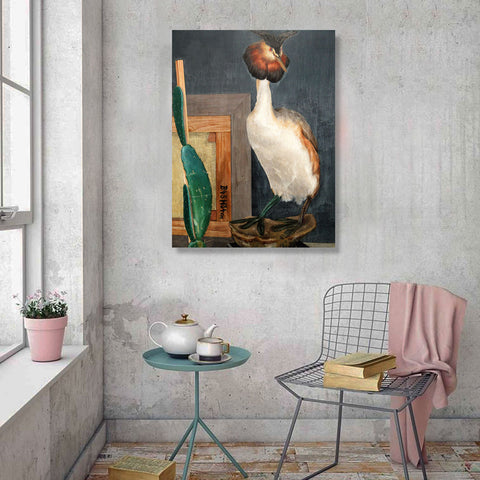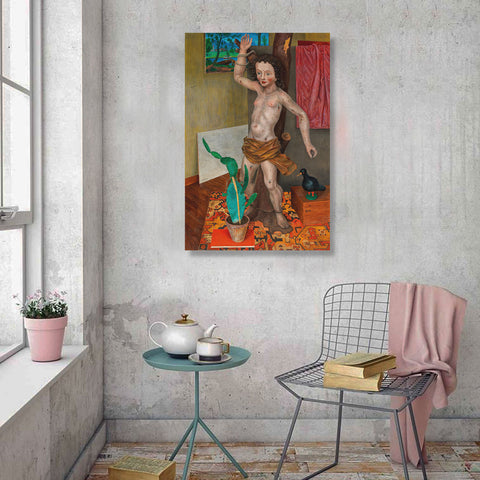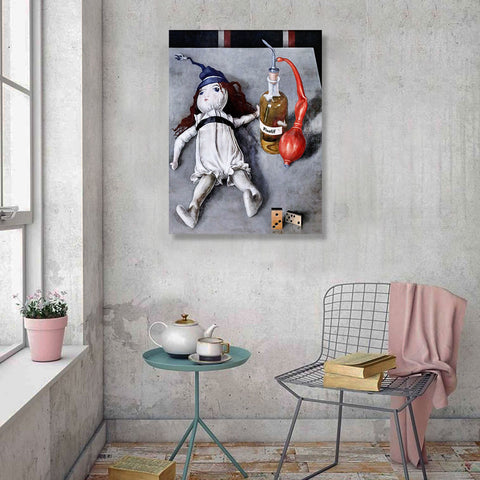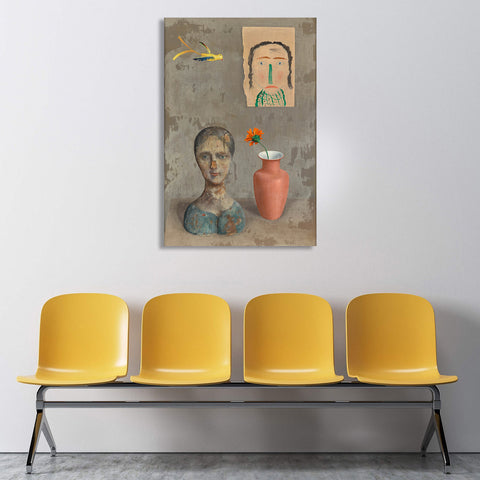Rudolf WACKER
 >
>Kees VAN DONGEN, Self-portrait.
Rudolf WACKER (1893 - 1939) was a landscape, still life, and portrait painter, and was considered one of the most important European artists of the years between the two world wars. He was a major representative of the Neue Sachlichkeit (“New Objectivity”) movement in Germany and Austria.
Wacker was born in Bregenz, Austria. Before he could read and write, Rudolf showed considerable aptitude for painting and drawing. At eighteen, he applied to study at the Academy of Fine Art in Vienna but failed the entrance exam. Undeterred, he applied to study at the Art School in Weimar under Albin Egger-Lienz and Walter Klemm in 1911. At the start of the First World War, Wacker signed up for the German army. In 1915 he was captured and sent to a prisoner of war camp in Siberia. In 1920, He was released from prison. He returned to Berlin and began painting. Unable to sell his work, Wacker also worked as an illustrator for magazines and books. In 1938, Germany annexed Austria as part of Greater Germany. Wacker was a marked man. The Gestapo visited his studio. He was taken away for interrogation. This happened several times until, during one interrogation at his studio in 1939, Wacker suffered a massive heart attack. He was removed to a hospital where he died a few days later. Rudolf Wacker was 46.ly five years.
 >
>Kees VAN DONGEN, Self-portrait.
Rudolf WACKER (1893 - 1939) was a landscape, still life, and portrait painter, and was considered one of the most important European artists of the years between the two world wars. He was a major representative of the Neue Sachlichkeit (“New Objectivity”) movement in Germany and Austria.
Wacker was born in Bregenz, Austria. Before he could read and write, Rudolf showed considerable aptitude for painting and drawing. At eighteen, he applied to study at the Academy of Fine Art in Vienna but failed the entrance exam. Undeterred, he applied to study at the Art School in Weimar under Albin Egger-Lienz and Walter Klemm in 1911. At the start of the First World War, Wacker signed up for the German army. In 1915 he was captured and sent to a prisoner of war camp in Siberia. In 1920, He was released from prison. He returned to Berlin and began painting. Unable to sell his work, Wacker also worked as an illustrator for magazines and books. In 1938, Germany annexed Austria as part of Greater Germany. Wacker was a marked man. The Gestapo visited his studio. He was taken away for interrogation. This happened several times until, during one interrogation at his studio in 1939, Wacker suffered a massive heart attack. He was removed to a hospital where he died a few days later. Rudolf Wacker was 46.ly five years.










